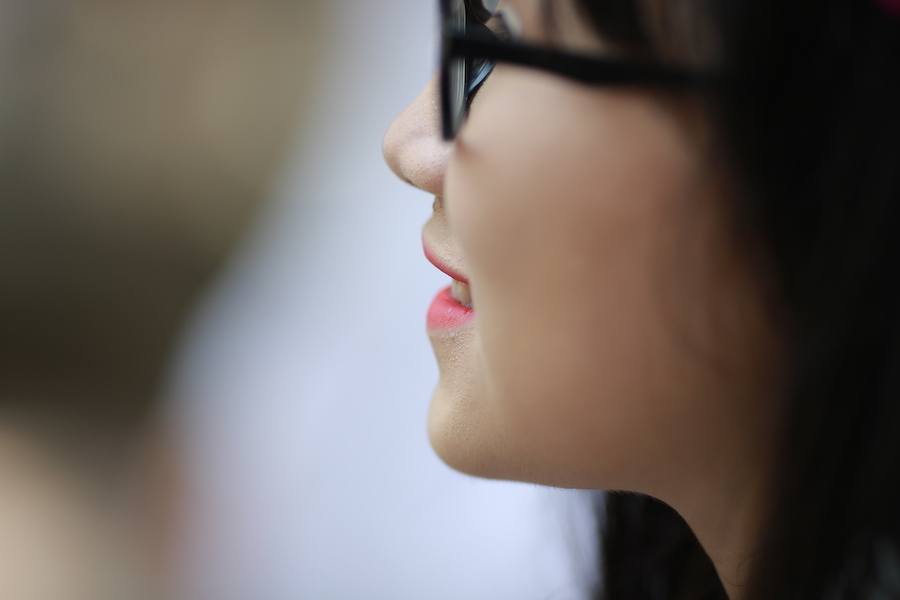Just Peach Fuzz or Hirsutism?

Unwanted hair, anywhere on a person’s body or face, isn’t always easy to deal with. There is a well-documented condition called Hirsutism that could be the explanation you’ve been searching for when looking for answers about why you have unwanted hair on your body. All women have hair on their body and the face, however this hair in most cases goes unnoticed by many, because it is light in color and very fine.
Is Peach Fuzz on the Face Normal?
It is absolutely normal for everyone to have hair on their face. If you have started to notice that almost-there fuzz on your cheeks and are worried about whether it is the start of something more, then please do not worry. We all have it.
Normally, when a person goes through puberty, the vellus hairs have the potential to become slightly thicker and/or longer in specific areas on a person’s face. This will typically include on a person’s jawbone, or on their upper lip.
Aside from popular belief, peach fuzz is a type of hair growth that is considered to be normal.
What Exactly is Peach Fuzz?
Peach Fuzz is the slang term given to the vellus hair that can form on a person’s body and is often more noticeable on the face. The hair usually is thin, short, and hardly noticeable. This hair is called peach fuzz as resembles the short, tiny hair that exist on the surface of a peach.
What Can Cause Peach Fuzz?
Having peach fuzz is normal, as all surfaces of our body are covered with hair, except for palms of our hands, the soles of our feet, and our lips. However if the hair growing on your body is darker and coarser, it could be a sign for higher than average androgen hormone levels. All women will produce these types of hormones, however in lower levels than men. If there are higher levels of androgen hormones present, it can result in male pattern hair growth, which is also called hirsutism. This can be due to a medical condition such as Polycystic Ovary Syndrome (PCOS), a genetic (familial) trait or medications that can cause it.
Can you Shave Peach Fuzz?
There are lots of people who routinely shave off their peach fuzz on their face. While shaving is often given a bad reputation for causing hair to grow back thicker and coarser, this is not actually the case.
Are there any Natural Ways to Get Rid of Peach Fuzz?
One of the ways that are cited as an effective way to remove peach fuzz on a person’s face is by using a very flat razor that is almost scalpel-like in order to scrape away the upper layers of the dermis (skin). The result of this means that the turnover of the build-up of skin cells is boosted, and this helps with hyperpigmentation as well as removing peach fuzz, also known as the vellus hairs on a person’s face. This will not remove the root of the hair, so you should expect it to regrow over time. This is a process that is usually only effective for the short-term removal of peach fuzz, but it is completely natural and there are no chemicals needed or used in the process.
Hirsutism vs. Peach Fuzz
The key differentiator between what is classified as a typical hair growth on a woman’s face and body, which is referred to as ‘peach fuzz,’ and the condition known as Hirsutism, is the thickness and texture of the hair. In almost all cases, when the hair that grows on a woman’s face is unwanted, it is because it is coarse, dark, and noticeable. The specific growth pattern that is associated with the Hirsutism condition has strong links with virilization. Women who are affected by this particular condition will typically demonstrate the characteristics that are directly related to male hormones.
Hypertrichosis is different to Hirsutism, and although both conditions result in excess hair, with Hypertrichosis, the hair growth is usually apparent in areas that are not heavily dependent on male hormones. With Hypertrichosis, the excess hair growth can occur anywhere on the body.
With Hirsutism, the excess hair growth is usually found in so called “male patterns”, so in places where men normally have more hair, such as the chin, thighs, chest, and the back. This is due to the excess amounts of androgens, specifically testosterone, that lead to hair growth in these areas.
Hirsutism affects between 5 – 10% of all women. It can sometimes run in families and is often also more apparent in women who are of Mediterranean, African, and Middle-Eastern origin.
While the presence of any excess or unwanted hair is annoying, for some people, it can have a severe impact on their confidence, their self-esteem, their career, their relationships, and more. It is not considered to be a dangerous medical condition, but if the root cause of the issue relates to an hormone imbalance, it is important to identify the underlying condition and seek the proper medical care.
In summary, every person has peach fuzz on their body; and the hairs are almost always thin and light in color. Hirsutism however is characterized by darker, more coarse hairs, and it is usually only present in specific places that impacted by hormones, such as the face, neck, pubic regions, back, and chest. If you experience the symptoms of hirsutism, make sure to schedule an appointment with your doctor to discuss the condition and possible treatment options.
